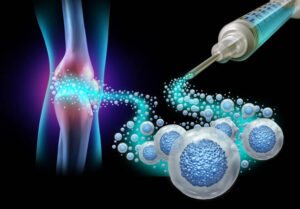What is Vertical Pneumatic Axial Disc Decompression?
Vertical Pneumatic Axial Disc Decompression is a specialized therapeutic technique designed to alleviate pressure on the spinal discs. This method utilizes pneumatic technology to gently decompress the discs in a vertical alignment, promoting better spinal health and reducing discomfort. While it may sound complex, the essence of this technique lies in its ability to provide relief for those suffering from back pain and related issues. By understanding and exploring this approach, we can appreciate its potential benefits for improving overall well-being.
The Science Behind VPADD
The science behind vertical disc decompression is a fascinating area of study that aims to address spinal health issues. This innovative technique focuses on alleviating pressure on the intervertebral discs, which can often lead to pain and discomfort. By utilizing pneumatic mechanisms, this approach gently decompresses the discs, promoting better alignment and reducing strain on surrounding tissues.
While it may sound complex, the underlying principle is straightforward: creating space within the spinal column to relieve pressure. This method has shown promise in clinical settings, offering patients a non-invasive option for managing their back pain.
Benefits of Vertical Pneumatic Axial Disc Decompression for Patients
Pain Relief: Many patients experience significant reduction in back pain, allowing them to engage in daily activities with greater ease.
Non-Invasive Treatment: This method offers a non-surgical alternative, minimizing recovery time and reducing the risks associated with invasive procedures.
Improved Mobility: Patients often report enhanced flexibility and mobility following treatment, which can lead to a more active lifestyle.
Targeted Therapy: The technique specifically targets affected discs, providing precise treatment that can lead to better outcomes compared to generalized therapies.
Quick Sessions: Treatment sessions are typically short, making it easier for patients to fit into their busy schedules without long commitments.
Long-Term Benefits: Many individuals find lasting relief from symptoms over time, contributing to improved quality of life and overall well-being.
By considering these benefits, patients may find that Vertical Decompression is a viable option for managing their back pain effectively.
Who Can Benefit from This Treatment? Understanding the Ideal Candidates
Individuals with Specific Health Conditions: Those suffering from chronic pain, inflammation, or other targeted health issues may find significant relief through this treatment.
People Seeking Preventative Care: Individuals looking to maintain their health and prevent future ailments can benefit from the proactive approach this treatment offers.
Athletes and Active Individuals: Athletes aiming to enhance performance or recover from injuries might discover that this treatment supports their physical goals.
Busy Professionals: Those with hectic lifestyles who experience stress-related symptoms may find this treatment helpful in managing their overall well-being.
Health-Conscious Individuals: Anyone interested in holistic approaches to health and wellness can explore how this treatment aligns with their lifestyle choices.
Each person’s journey is unique, and it’s important to consult with a healthcare professional to determine if this treatment is right for you.
In conclusion, deciding whether Vertical Decompression is right for you involves careful consideration of your unique circumstances and health needs. While this innovative procedure offers promising benefits for some, it’s essential to explore all your options and consult with healthcare professionals who can guide you based on your specific condition. Take the time to weigh the potential advantages against any risks, and don’t hesitate to seek second opinions if needed. Your well-being should always come first.







